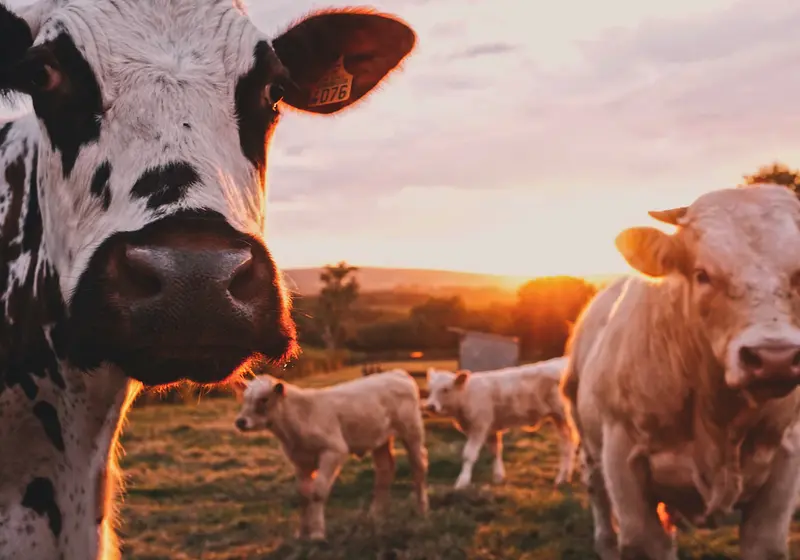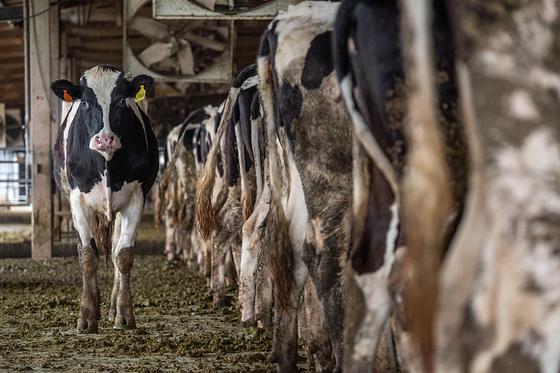COVID-19 likely emerged because of the gruesome conditions of Chinese wet markets—where meat is butchered and processed. But if we, as Americans, don’t change the way our own meat industry is run, it is only a matter of time before another worldwide killer emerges.
Let us slide into your dms 🥰
Get notified of top trending articles like this one every week! (we won't spam you)Conditions in Factory Farms
Imagine that you are stuffed into a small shed with 500 strangers. There are no windows or bathrooms. It is impossible to move without bumping into others.
This is the horrific reality of the 9.5 billion cows, pigs, and chickens that are raised for food in factory farms — where 99% of our meat is produced. While we are taking care to stay six feet away from our neighbor, most chickens will have space smaller than a piece of paper; pigs, who can reach 300 pounds, are stuffed into cages no bigger than a fridge. Cows are crammed into tiny feedlots, where they often don’t have the space to lie down without being on top of another.
All animals are forced to relieve themselves in these cramped quarters. Unable to move around, they live in their urine and feces until their cages are cleaned, which is often performed only once or twice a month. The majority of chickens will not see their cage cleaned within their lifetimes. The noxious stench can be smelled miles away.
Take the Quiz: Which Indian city is the perfect holiday spot for you!?
Let's match you with an Indian city that you would love!
Diseases
In these conditions, it is unsurprising that disease runs rampant in factory farms. According to One Green Planet, approximately 80% of pigs have pneumonia by the time they are killed for meat. Chickens suffer greatly from high concentrations of ammonia, a highly acidic substance found in urine.
It causes respiratory problems, damages the lungs, and burns their skin. Cows spend the majority of their lives standing in their own feces, which emit methane hydrogen sulfate, leading to serious respiratory illnesses and potential brain damage. Consuming these diseased and contaminated animals can have astronomical effects on human health and well-being.
The H1N1 swine flu virus is a prime example of the dangers of factory farms: it circulated in pig farms in North America before being transmitted to humans in 2009, killing hundreds of thousands of people. Similarly, bird flu, which began in factory farmed chickens, has killed thousands of people worldwide. The 1918 influenza pandemic was believed to have arisen in Midwestern farms. Ebola, SARS, Mad Cow Disease, and countless other deadly illnesses have all been linked to animal agriculture.
If we continue to stand by and watch as factory farms treat animals horrifically, squishing them together and keeping them in filthy sheds, then deadly diseases will continue to arise and ravage our world. We cannot allow sickness to fester in farm animals and not expect detrimental consequences to human health.
But this is not the end of the story. It is true that, with all of this disease desolating factory farms, with the lack of sanitation and lack of space, with the general shortages of food and water, and with the absence of veterinary care, animals live horrific lives. But almost all do live — they survive until they are old enough for slaughter. Given their conditions, how is this possible?
Factory farms, of course, are aware of health crises that arise from their treatment of animals. But they are also massive money-making machines. They provide animals with adequate means to survive; unfortunately, these have unintended and potentially deadly consequences.
Antibiotics
Picture a newborn pig at a typical factory farm. She is just a few days old, but already she has received her first antibiotic — oxytetracycline. It is meant to keep her from having diarrhea and other stomach issues, to which her new and untried immune system is particularly prone.
Over the next few weeks, as she is removed from her mother and placed in a transition pen, more antibiotics are sporadically thrown into her food, to protect her from another bout of stress-induced diarrhea. By the time she is moved to a “nursery”, where she and her companions are crowded into a windowless shed, everything she eats is rich in antibiotics, meant to protect her from a host of diseases such as meningitis, greasy pig disease, and other stomach issues. The drugs act like a wall around the pig’s weak, stressed immune system: smothering disease long enough for her to reach the slaughterhouse.
Image Credit: Jo-Anne McArther on Unsplash
Granted, the wall of antibiotics has many holes in it. Viruses, such as swine flu and ebola, are not affected by antibiotics. Many bacterial infections, such as pneumonia, are able to penetrate the wall and cause animals to fall ill. But the antibiotics, for the most part, work well enough, and are administered often enough, to keep the majority of creatures alive until they reach the slaughterhouse.
About 80% of the world’s antibiotics are used in the meat industry. 8 out of every 10 of these essential medical products aren’t being used to help sick and dying humans, but are instead fed to animals unnecessarily. If factory farms would simply provide their animals with humane living conditions, the 5.7 million people who die every year due to lack of antibiotics could be saved. But instead of using our precious medicines to save lives, we use them on meat.
However, believe it or not, the biggest problem with the excessive use of antibiotics in factory farms is not the waste in medicine. Instead, it is the medicine’s drop in effectiveness — the rise in antibiotic-resistant bacteria that now threaten the human population.
Because the animals in the meat industry are chock-full of a variety of antibiotics, eating meat is equivalent to taking a dosage of the powerful medicine unnecessarily. The extra antibiotics circulating in our systems gives bacteria a chance to encounter the medicine, survive, and mutate, so that they can overcome the drug in the future.
Approximately 700,000 people die every year from bacterial infections that could have been easily cured 20 years ago. And this is only the beginning. A review from the World Health Organization suggests that, by 2050, we could have up to 10 million deaths annually from antibiotic-resistant bacteria.
Eventually, they predict, our world will enter a “post-antibiotic era”, where these miracle drugs are useless against diseases. And, according to the CDC, one of the primary causes of antibiotic resistance is the excessive use of antibiotics in factory farms.
What You Can Do
The most obvious step in preventing the rise of deadly diseases and the reemergence of bacterial killers is to lower your meat consumption. By eating less meat, or cutting it out of your diet altogether, you decrease the chance of developing a dangerous illness, or of the bacteria in your system developing antibiotic resistance. If you continue eating meat, buy free-range chickens and grass-fed beef, as these are more likely to be free from disease. Always be on the lookout for antibiotic-free meat at grocery stores and restaurants.
Reducing our meat consumption and helping to reform factory farms is essential. Because if we don’t improve the way we produce meat, or give it up entirely, another pandemic — another quarantine, another spike in hospitalizations, another 300,000 dead — is inevitable.

















